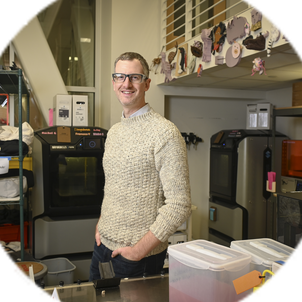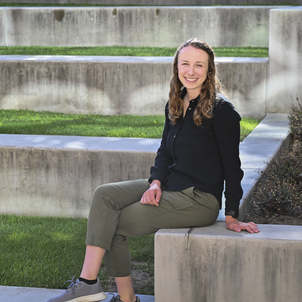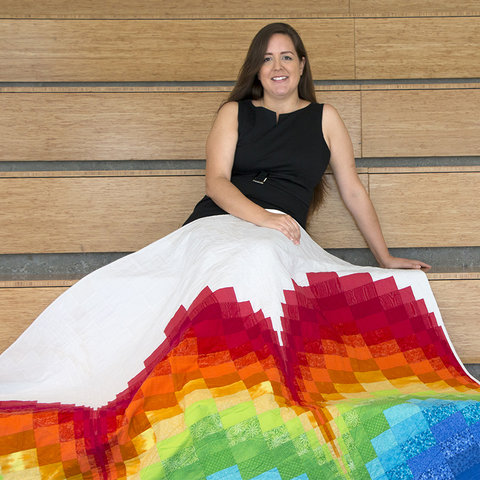The pattern on this quilt looks like a simulation we would produce in our lab, and I have published papers that have very similar images in them. In my work, I specifically study how the brain grows and changes, trying to understand this process and how it sometimes goes wrong, as in diseases like microcephaly. During the third trimester of gestation, the cerebral cortex of the human brain transforms from a small, smooth surface to a large, highly convoluted one. This is important because, generally speaking, the more folded the brain, the higher the capacity for intelligence. Primates have highly folded brains, while the brains of mice and rabbits are less folded. The pattern on this quilt depicts the process that leads to the wrinkling and folding of the cerebral cortex. The use of many squares of fabric to make a complex undulating shape mimics a technique called finite element analysis, or FEA, which involves the numerical division of a complex region of the brain into many small, regular pieces. The equations governing these “finite elements” are very simple, but when solved simultaneously for the entire domain, they can calculate the deformation of a system as complex as the brain. FEA helps us better understand brain development, disease and injury.
In FEA, colors are used to represent quantities of interest. On this quilt, volume change due to growth is loosely depicted on a blue-to-red scale. The quilt is done in the bargello style, measuring 74-by-77 inches.
Related spotlights

Dan Somen

Sonia Martin


